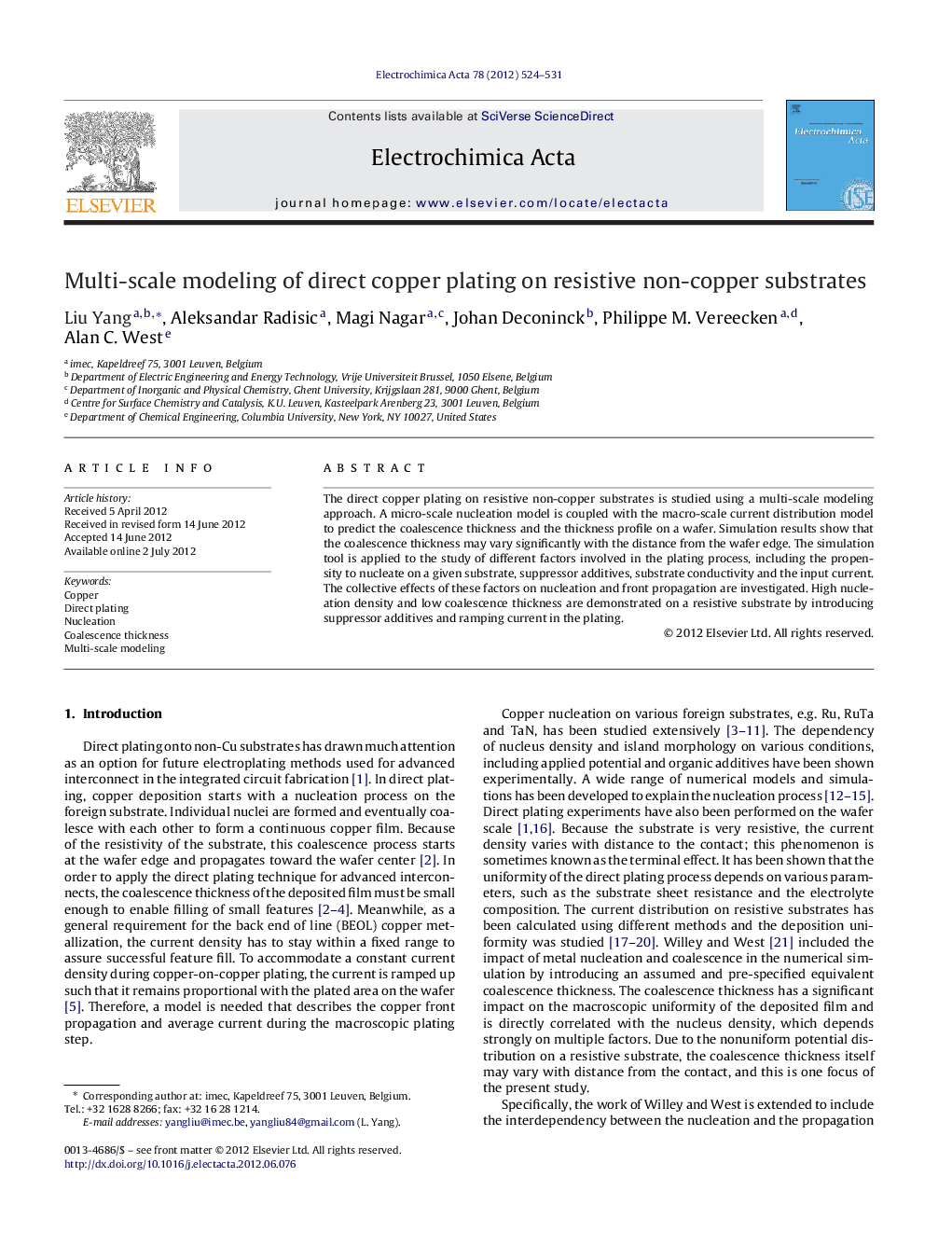| Article ID | Journal | Published Year | Pages | File Type |
|---|---|---|---|---|
| 188350 | Electrochimica Acta | 2012 | 8 Pages |
The direct copper plating on resistive non-copper substrates is studied using a multi-scale modeling approach. A micro-scale nucleation model is coupled with the macro-scale current distribution model to predict the coalescence thickness and the thickness profile on a wafer. Simulation results show that the coalescence thickness may vary significantly with the distance from the wafer edge. The simulation tool is applied to the study of different factors involved in the plating process, including the propensity to nucleate on a given substrate, suppressor additives, substrate conductivity and the input current. The collective effects of these factors on nucleation and front propagation are investigated. High nucleation density and low coalescence thickness are demonstrated on a resistive substrate by introducing suppressor additives and ramping current in the plating.
